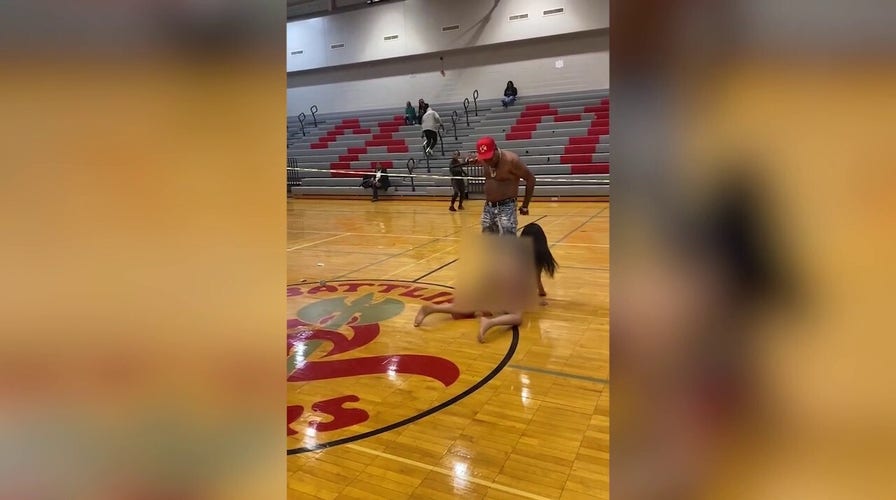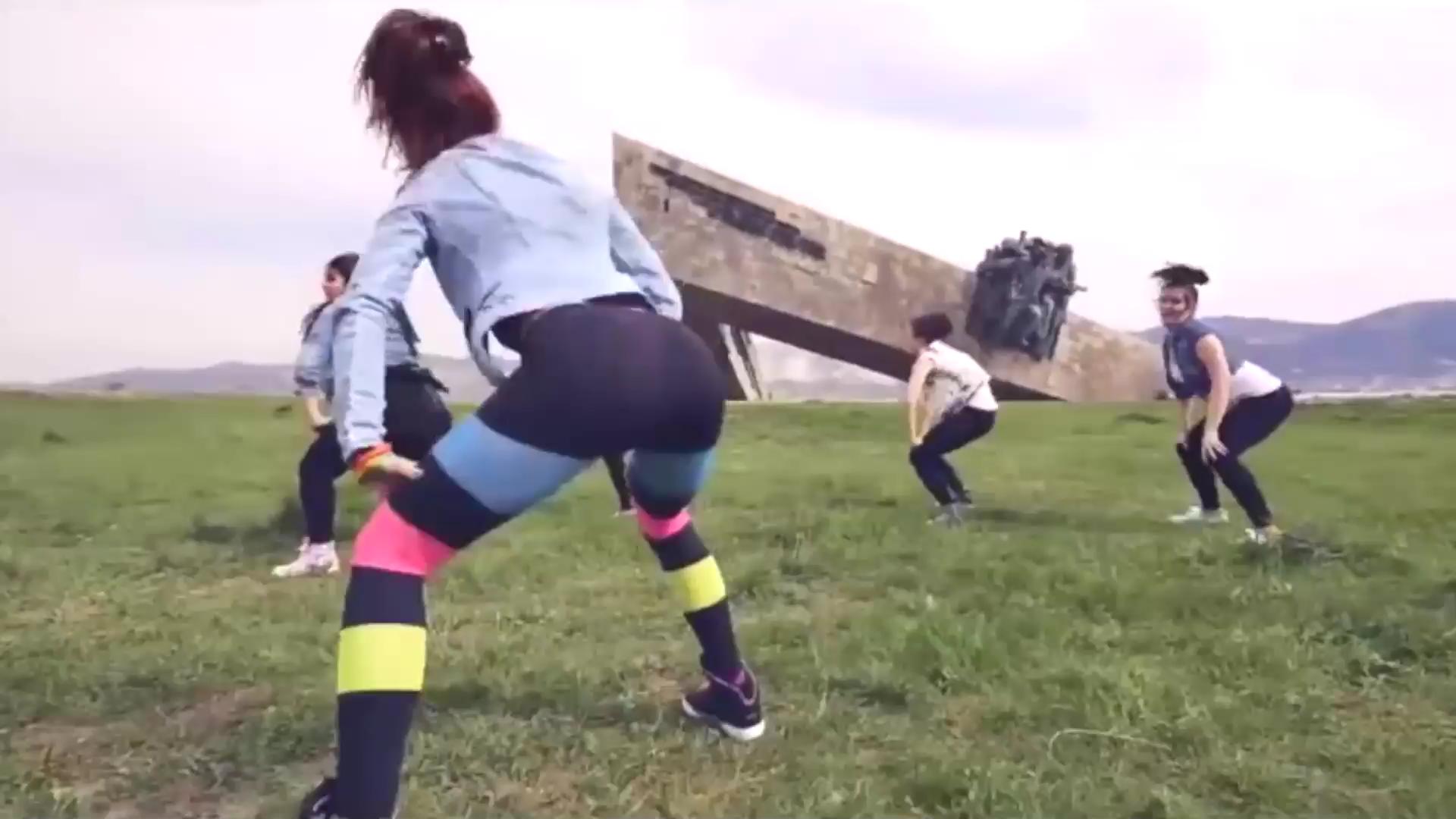White Girl Twerking: A Cultural Exploration And Understanding
Twerking has evolved from a cultural dance form to a global phenomenon that has sparked debates, discussions, and celebrations across various demographics. The term 'white girl twerking' has emerged as a significant cultural reference point, reflecting the intersection of race, identity, and expression in modern society. As twerking continues to gain popularity, it is essential to explore its roots, cultural implications, and the societal dynamics surrounding it.
Originating from African American communities, twerking has transcended its cultural boundaries to become a universal form of expression. However, the phrase "white girl twerking" often raises questions about cultural appropriation, representation, and the dynamics of identity. This article delves into the history, evolution, and cultural significance of twerking while addressing the nuances of its adoption by individuals outside its original cultural context.
Through this exploration, we aim to provide a comprehensive understanding of the topic, highlighting the importance of cultural sensitivity, respect, and inclusivity. Let us embark on this journey to unravel the complexities surrounding the phenomenon of "white girl twerking" and its implications in today's world.
Read also:Mandy Rose Onlyfans A Comprehensive Guide To Her Career Content And Impact
Table of Contents
- The History of Twerking
- Cultural Significance of Twerking
- Understanding White Girl Twerking
- Cultural Appropriation vs. Appreciation
- Media Representation of White Girl Twerking
- Societal Impact and Perceptions
- Celebrity Influence on Twerking
- Community Response and Dialogue
- Education and Cultural Sensitivity
- Conclusion: Moving Forward with Respect
The History of Twerking
Twerking traces its roots back to the 19th century, with origins in West African dance traditions. These dances were brought to the Americas through the transatlantic slave trade, where they evolved into various forms of expression within African American communities. The modern iteration of twerking gained prominence in the 1990s, particularly in New Orleans bounce music, where artists like DJ Jubilee popularized the dance move.
By the early 2000s, twerking had become a staple in hip-hop culture, with artists such as Lil' Bow Wow and Destiny's Child incorporating it into their performances. The dance's rise to global fame was further catalyzed by Miley Cyrus's infamous performance at the 2013 MTV Video Music Awards, which brought twerking into mainstream consciousness.
Evolution of Twerking in Popular Culture
- 1990s: Emergence in New Orleans bounce music
- 2000s: Integration into hip-hop performances
- 2010s: Global recognition through mainstream media
Cultural Significance of Twerking
Twerking is more than just a dance move; it is a powerful form of self-expression and empowerment for many individuals, particularly within African American communities. Historically, twerking has served as a means of celebrating Black culture, resilience, and identity. It embodies a spirit of liberation and defiance against societal norms and expectations.
For many, twerking represents a celebration of body positivity and self-confidence. It challenges traditional beauty standards and promotes the idea that all bodies are worthy of celebration. However, the cultural significance of twerking is often overlooked or misunderstood when it is adopted by individuals outside its original cultural context.
Key Cultural Aspects of Twerking
- Rooted in African American traditions
- Symbol of empowerment and liberation
- Challenge to societal norms and expectations
Understanding White Girl Twerking
The phrase "white girl twerking" has become a widely recognized term, often used to describe the phenomenon of white women performing twerking in mainstream media and social platforms. While some view it as a form of cultural exchange, others criticize it as an example of cultural appropriation. Understanding the dynamics of "white girl twerking" requires a nuanced exploration of its cultural implications and societal perceptions.
For many white women, twerking serves as a form of self-expression and empowerment, allowing them to embrace a dance style that challenges traditional norms. However, the adoption of twerking by individuals outside its cultural origins raises important questions about respect, acknowledgment, and representation.
Read also:Kalani Rodgers Nude Understanding The Controversy And Context
Factors Influencing White Girl Twerking
- Media exposure and influence
- Desire for self-expression and empowerment
- Access to cultural resources and education
Cultural Appropriation vs. Appreciation
The debate surrounding "white girl twerking" often centers on the distinction between cultural appropriation and cultural appreciation. Cultural appropriation refers to the adoption of elements from a marginalized culture by members of a dominant culture without proper understanding, acknowledgment, or respect for their origins. In contrast, cultural appreciation involves engaging with another culture in a way that honors its traditions, values, and contributions.
When it comes to twerking, the line between appropriation and appreciation can be blurred. It is essential for individuals to approach the dance form with sensitivity, respect, and a willingness to learn about its cultural roots. This includes acknowledging the contributions of African American communities and supporting their continued celebration and empowerment.
How to Practice Cultural Appreciation
- Learn about the history and cultural significance of twerking
- Support and uplift members of the originating culture
- Engage in respectful dialogue and education
Media Representation of White Girl Twerking
Mainstream media plays a significant role in shaping perceptions of "white girl twerking." The portrayal of white women performing twerking in films, music videos, and social media platforms has contributed to its widespread popularity. However, these representations often overlook the cultural origins and significance of twerking, reducing it to a mere entertainment spectacle.
To address this issue, it is crucial for media creators to prioritize authentic representation and storytelling. This includes highlighting the contributions of African American communities and ensuring that their voices are heard and respected in the narrative.
Examples of Media Representation
- Miley Cyrus's 2013 VMAs performance
- Social media trends featuring white women twerking
- Films and TV shows incorporating twerking as a plot device
Societal Impact and Perceptions
The phenomenon of "white girl twerking" has sparked a range of reactions and discussions within society. For some, it represents a celebration of diversity and cultural exchange. For others, it highlights the ongoing challenges of cultural appropriation and respect. Understanding the societal impact of this phenomenon requires examining the perspectives of both the originating culture and those who adopt it.
Research conducted by cultural studies experts indicates that the perception of "white girl twerking" varies significantly across demographics. While younger generations tend to view it as a form of self-expression, older generations may perceive it as a misrepresentation of cultural traditions.
Societal Reactions to White Girl Twerking
- Celebration of diversity and cultural exchange
- Criticism of cultural appropriation and misrepresentation
- Generational differences in perception
Celebrity Influence on Twerking
Celebrities have played a pivotal role in shaping the perception and popularity of twerking. High-profile figures such as Miley Cyrus, Iggy Azalea, and Cardi B have all contributed to the mainstream recognition of the dance form. While some celebrities have been praised for their respectful approach to twerking, others have faced criticism for their lack of acknowledgment of its cultural origins.
The influence of celebrities extends beyond their performances, as they often set trends and influence societal norms. It is essential for public figures to use their platforms responsibly, promoting cultural sensitivity and respect in their representations of twerking.
Celebrities and Twerking
- Miley Cyrus: Catalyst for mainstream recognition
- Iggy Azalea: Criticism for cultural appropriation
- Cardi B: Advocacy for cultural appreciation
Community Response and Dialogue
The response to "white girl twerking" within African American communities has been varied, with some embracing the cultural exchange and others expressing concerns about appropriation. Open dialogue and education are essential in fostering mutual understanding and respect between cultures. Community leaders and activists have emphasized the importance of acknowledging the contributions of African American communities and supporting their ongoing empowerment.
Initiatives such as cultural workshops, educational programs, and community events have been instrumental in promoting cross-cultural understanding and collaboration. By engaging in respectful dialogue, individuals can work together to create a more inclusive and respectful cultural landscape.
Community Initiatives
- Cultural workshops and educational programs
- Community events celebrating African American traditions
- Open forums for dialogue and discussion
Education and Cultural Sensitivity
Education plays a vital role in promoting cultural sensitivity and understanding. By learning about the history and cultural significance of twerking, individuals can approach the dance form with respect and appreciation. Schools, universities, and community organizations can incorporate cultural studies into their curricula, fostering a deeper understanding of diverse traditions and practices.
Additionally, resources such as books, documentaries, and online platforms can provide valuable insights into the cultural dynamics surrounding twerking. By engaging with these resources, individuals can develop a more informed and respectful perspective on the phenomenon of "white girl twerking."
Resources for Cultural Education
- Books on African American cultural history
- Documentaries exploring the origins of twerking
- Online platforms promoting cultural exchange
Conclusion: Moving Forward with Respect
In conclusion, the phenomenon of "white girl twerking" reflects the complexities of cultural exchange, appropriation, and respect in modern society. By understanding the history, cultural significance, and societal implications of twerking, individuals can approach the dance form with sensitivity and appreciation. It is essential to acknowledge the contributions of African American communities and support their ongoing empowerment and celebration.
We invite you to engage in respectful dialogue, share this article with your network, and explore the resources provided to deepen your understanding of this important topic. Together, we can foster a more inclusive and respectful cultural landscape that honors the diversity and richness of human expression.


